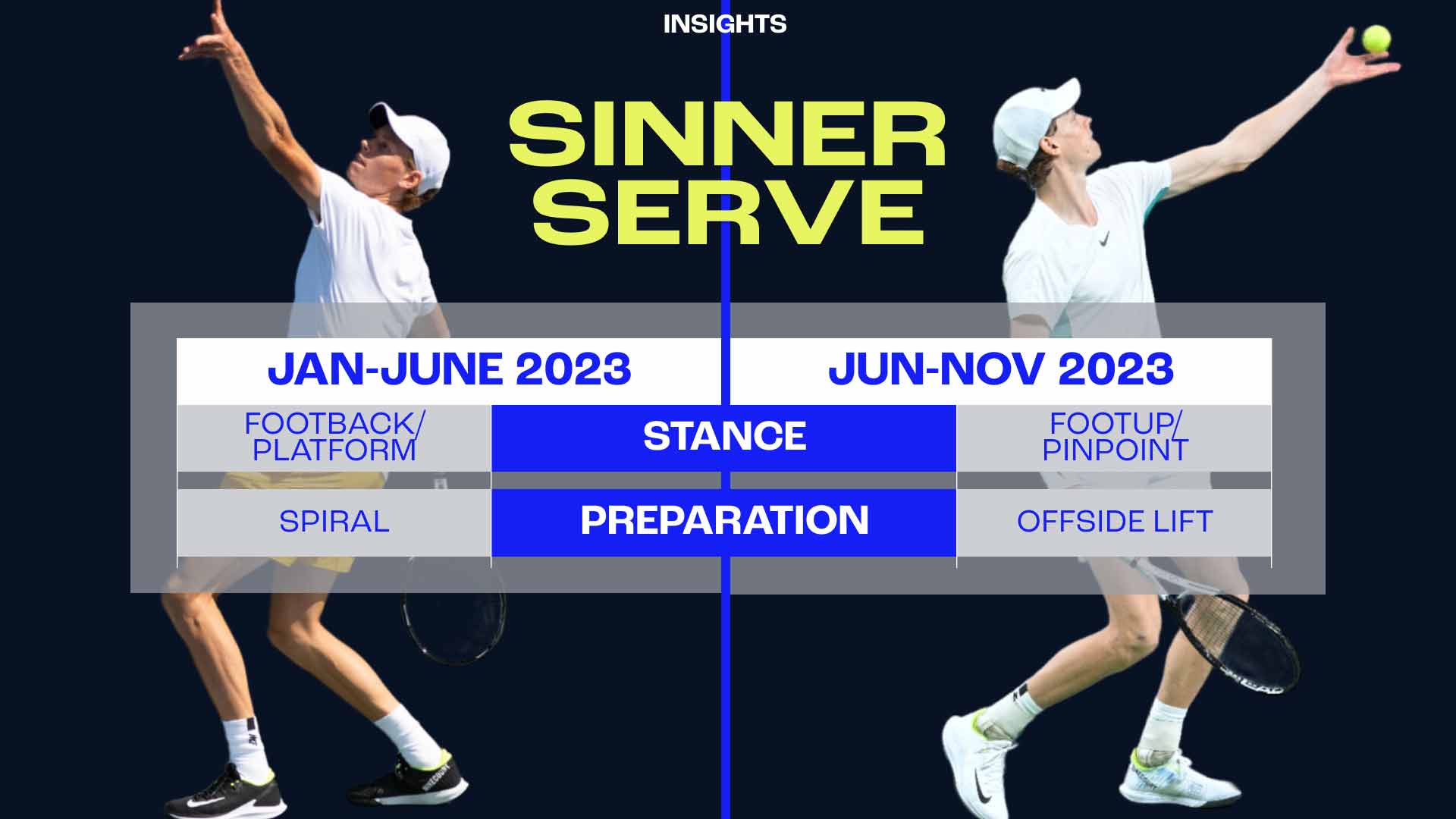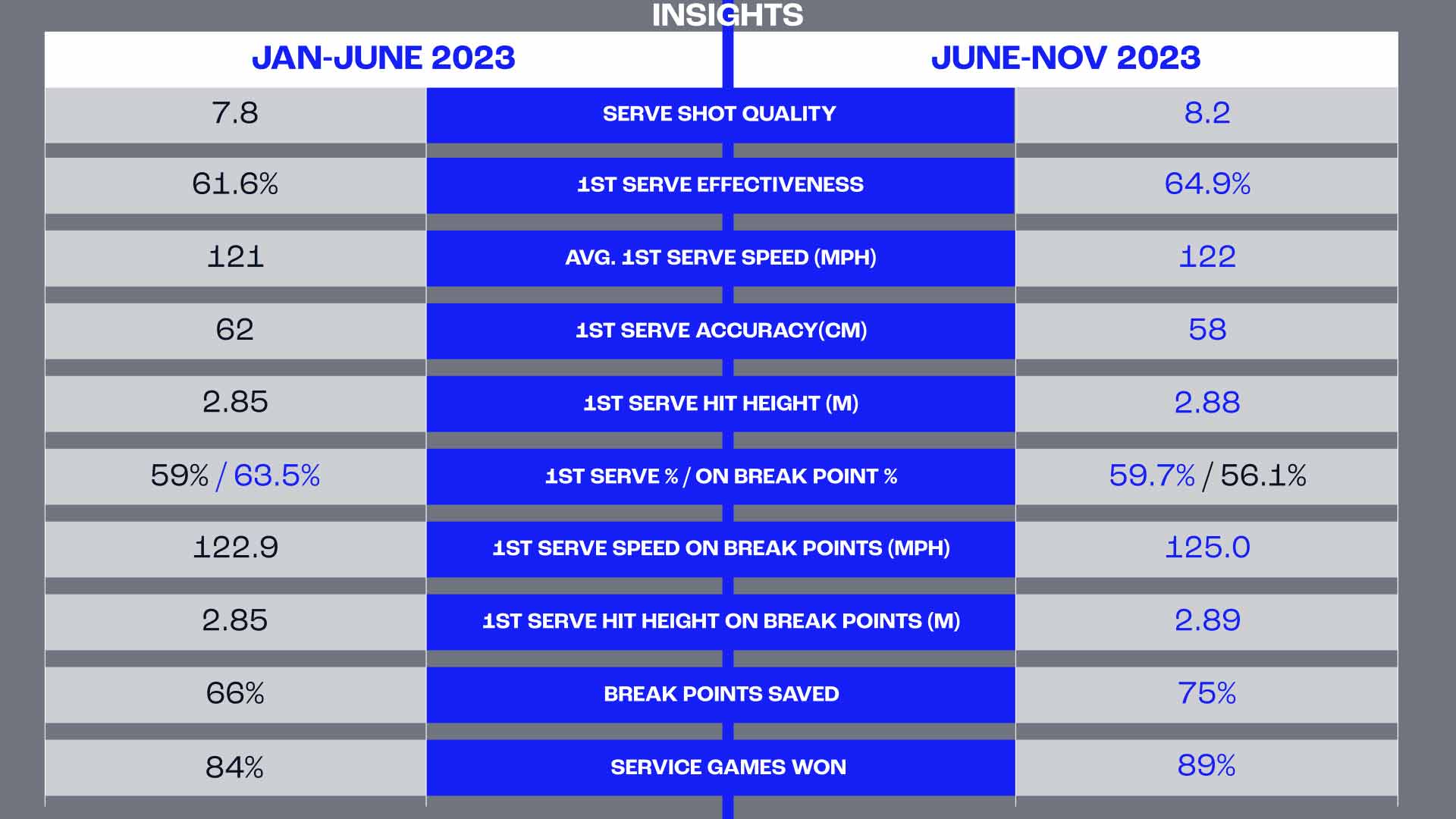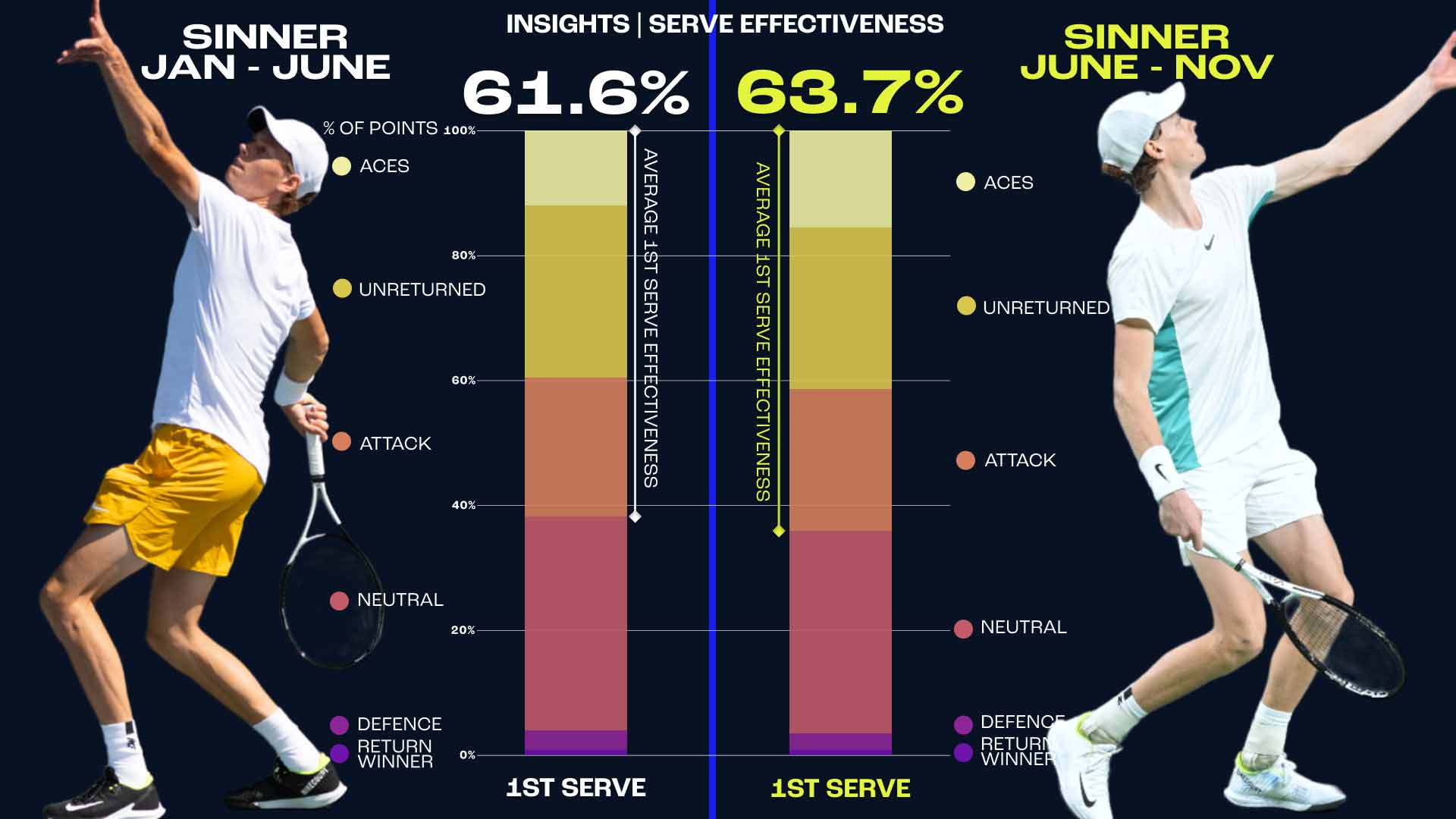If a long tried-and-tested approach does not seem to be working, do you stick with it, or twist?
That could have been the dilemma for Daniil Medvedev earlier this year after he fell to consecutive heavy defeats against Carlos Alcaraz in Indian Wells and at Wimbledon, respectively. Medvedev struggled to counter Alcaraz’s top-class net play and use of drop shots in both matches, leading to suggestions that he may need to alter his trademark deep return position in order to beat the Spaniard.
Yet Medvedev is not one to question his own game, which has helped him earn 20 tour-level titles and made him a No. 1 in the Pepperstone ATP Rankings. He ignored any external calls to stand further forward to counter Alcaraz’s serve-and-volley charges, and he was vindicated in style at the US Open semi-finals in September, when he ousted the Spaniard across four sets in New York.
“That was a great feeling, because for sure before the match, especially against someone like Carlos, everyone on the internet was saying, ‘He has no chance if he doesn’t change his position’,” Medvedev told ATPTour.com. “You always have a chance. It’s just that against some types of players, maybe you’re going to be a little bit more vulnerable.”
Medvedev is 2-0 at this week’s Nitto ATP Finals after defeating Andrey Rublev and Alexander Zverev in Turin. On Friday, he plays Alcaraz in his final match in Red Group, the pair’s fifth Lexus ATP Head2Head meeting. The World No. 3 will hope the result echoes their most recent clash in New York, as opposed to their two opening encounters of 2023.
Medvedev won just five games against Alcaraz across two sets in the Indian Wells final in March, and nine games across three sets in the pair’s Wimbledon semi-final. While those results were disappointing, they were also learning experiences for Medvedev, who felt that the spacious environment of Arthur Ashe Stadium might also help him as he prepared for the US Open clash.
“Before the match, I was like, ‘Okay, I see what he’s doing’,” said Medvedev. “I think maybe on this court at the US Open, maybe I’m going to be okay returning from far and I’m going to be able to put him in trouble.
“If I saw that was not the case during the match, I might have had to change it, but at Wimbledon I tried to change my position on the return, and it didn’t work at all. Especially on grass, it’s tough to change things up during the match. At the US Open I straightaway felt like, ‘Wow, I feel like I can do something from this position. I can put him in trouble’.”
You May Also Like:
Medvedev Hopes To Follow Djokovic’s Example For Perfect Group Record
Although he has not made any significant change to his routine on return, it does not mean Medvedev is not open to new ideas. As coach Gilles Cervara revealed to ATPTour.com at the US Open, the pair looked at a return position closer to the baseline when they first started working together, although it ultimately proved a no-go.
“For sure there were some moments when we tried to work on different things,” recalled Medvedev. “Sometimes I can be against it. I don’t remember exactly, but usually what happens is at the beginning, I’m like, “Yeah, whatever. Why are we doing this?’ But then I try to do it well, so it’s good work anyway. Then the question is, do I do it in the match or not?”

Besides, Medvedev does adopt opponent-dependent changes to his return position, even if they are not obvious to the untrained eye.
“I think people can see that there are some matches where I go a little bit closer to the baseline, depending on the conditions,” he said. “There are some conditions where you’re going to break a guy maybe only one or two times in a three-set match.
“I don’t care if I return close to the baseline and I always get one or two points because of it, but then I miss the other three returns and he always wins the game at 40/30. I prefer to maybe lose three games at 40/0, where he’s going to do serve and volley or something. But then there is going to be this one game where he’s going to get a little tight, I’m going to get one or two returns, and I break.
“So it’s always this constant thinking, ‘How should I do it?’ Sometimes after the match, I can think, ‘I should have done it differently’, when I lose. You never know if it’s going to work, but I do change sometimes. Sometimes [my changes] are bigger, so maybe people can notice, sometimes not.”
Of course, whether or not to adjust a game plan for a specific opponent is not a dilemma unique to Medvedev. In fact, his return position makes the World No. 3 himself a particularly tricky proposition to prepare for, something he believes helped him this year become champion in Miami for the first time.
“I remember in Indian Wells, Alcaraz beat me quite easily doing a lot of drop shots,” recalled Medvedev. “Then in Miami the next week, everyone against me was trying to do a lot of drop shots, but they don’t do it the same. So I was just running there and hitting winners.”







